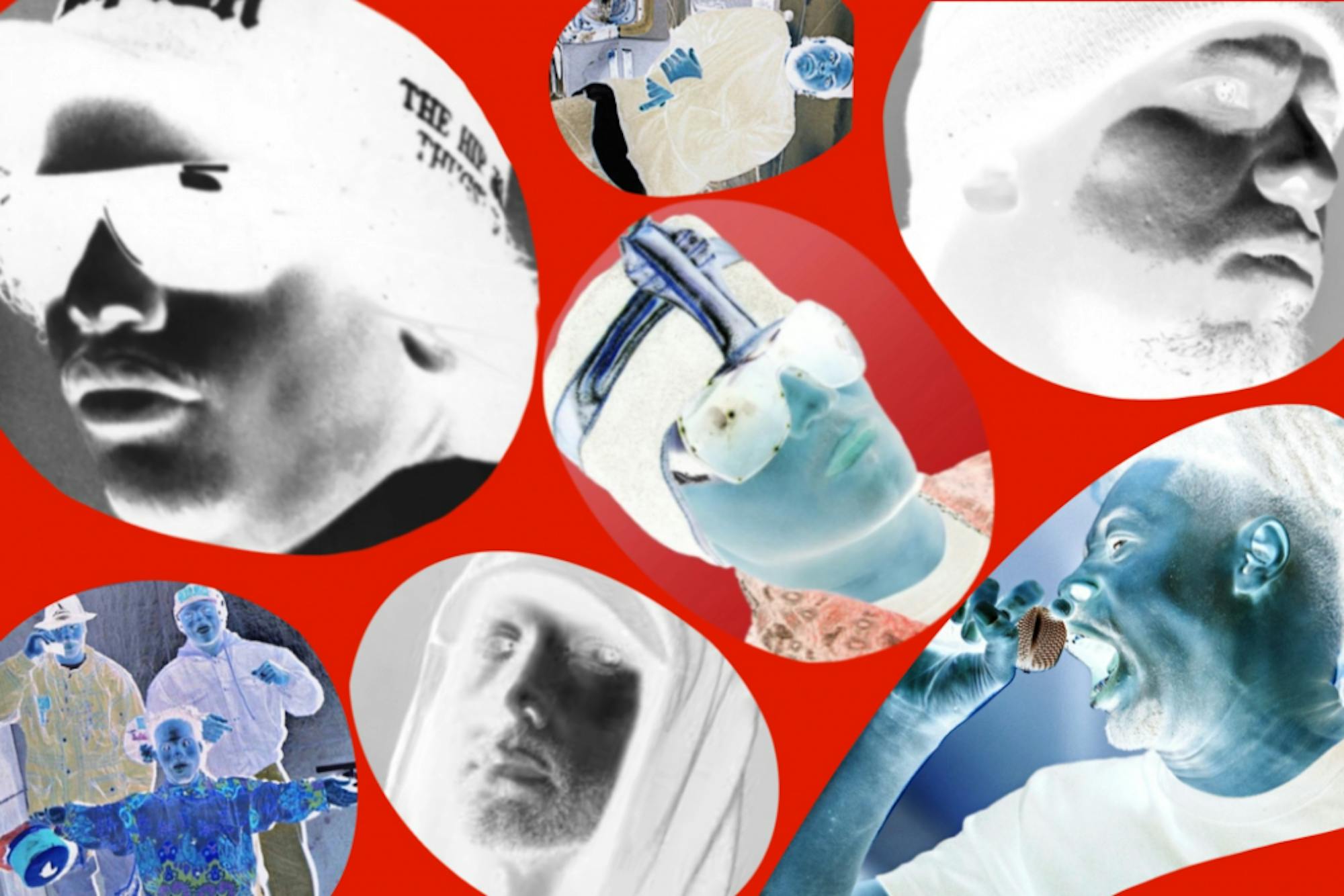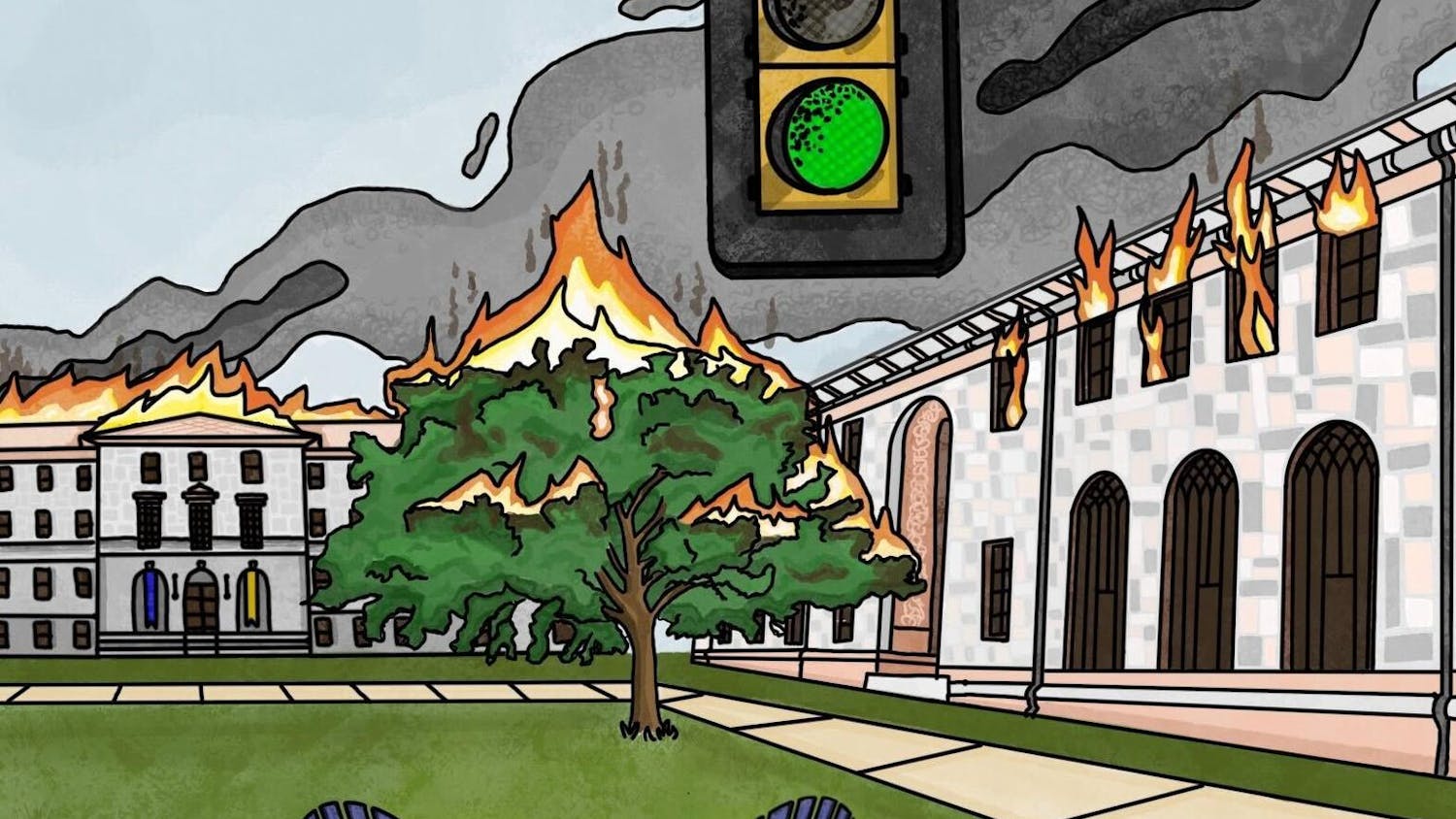Check out the Wheel Halloween Playlist!
Kool Keith is one of the craziest hip-hop artists of all time. He released one of hip-hop’s first horrorcore albums, “Dr. Octagonecologyst,” in 1996, under the pseudonym “Dr. Octagon.” The album is a story about an alien-like doctor who is also a superb rapper from the planet Jupiter. The alien has flown to earth to cure his patients’ otherworldly ailments, sometimes brutally murdering them but always spitting extraterrestrial bars. Keith came from a more subtle tradition of discussing real-life issues in rapped, narrative form. However, his example has influenced many modern artists to construct albums drawing from common themes present in horror films and other common frightening media. The invented subgenre has evolved to be a fictional outlet for the realistic and often scarier actualities of life, often touching on themes of race and class inequalities.

The tendency to gravitate toward the horror genre is one that makes sense in the scope of hip-hop’s themes. Hip-hop originated in communities of lower-income, Black youth, and often focuses on stories of struggle. Prolific horror author Stephen King mentions that “people do kind of gravitate towards horror stories when times are tough,” as a story about a murderous alien doctor for instance can make individual problems seem less significant in comparison. Geto Boys’ “Mind Playing Tricks on Me” is often cited as the chief example of this phenomenon in hip-hop. Prior to Geto Boys, gangster rap was fairly one-dimensional. Although brilliant and always entertaining in its own right, Ice Cube, Eazy-E and others had begun formulating the gangster archetype, a wild West villain with no reservations.
Geto Boys flipped this story on its head, discussing the experience of the gangster after they’ve returned home from a day of violence. It turns out, this life can be haunted by paranoia and PTSD. In their spookiest image, the group raps about a Halloween altercation. In detail, they describe teaming up and attacking a monstrously large man until they “felt just like a fiend. It wasn’t even close to Halloween.” This retrospective analysis was both a Halloween story and a cautionary tale, paving the way for future artists to rap their scary stories. Artists like Eminem have continued this invented tradition, rapping about their life difficulties through horror narratives.
Based on how Eminem has been widely accepted in mainstream culture, some listeners may forget the insidiousness of his early work. On his 2000 song “Kim,” Eminem raps from his alter ego, Slim Shady, violently kidnapping and murdering his ex-wife, the mother of his daughter. Even the most cold-blooded listener should grimace at his horrific narrative retelling: “You can't run from me, Kim! It's just us, nobody else//You're only making this harder on yourself!//Ha-ha, gotcha! Go ahead, yell!//Here, I'll scream with you, ‘Ah! Somebody help!’" His conceptual tendencies have impacted the creative breadth of the past generation, showing young artists how to apply wild and socially unacceptable thoughts in a way that is entertaining and interesting. Tyler, the Creator is one of the best examples of this influence making its way into music written decades after Eminem’s peak. For the music video of his breakout song “Yonkers,” Tyler menacingly stares into the camera before devouring a large cockroach and vomiting. Very Eminem stuff. The artists both broke into the music industry with their shock value antics, hoping to be so disturbing that listeners wouldn’t be able to look away. However, their music is far from the scariest: the scariest hip-hop song is “Dancing with the Devil” by Immortal Technique.
I listened to “Dance with the Devil” for the first time when I was around 14 years old. I had gotten the recommendation from a fellow hip-hop Twitter page, citing “Dance” as one of the best storytelling songs ever written. I focused on narrative and creativity rather than horror, which made the jumpscare even more devastating. The track is a modern version of the story of Oedipus Rex, backed by a hauntingly minimal instrumental and recounted in terrible detail. The story follows William, a young man in a “GoodFellas” (1990) situation, surrounded by criminals from a young age. He is offered a choice to accept his reality as a child born into a home filled with drugs and abuse or to choose an illegal path to the top. As is implied by the song’s title, the latter choice comes with strings attached. I refuse to spoil the shocking reveal of “Dance’s” narrative, as I hope I can offer someone the same pale-skinned, goosebumped moment that I experienced. However, if I had to recommend one song to illustrate the opportunity to terrify through hip-hop, “Dance with the Devil” would be it. Since then, younger artists have begun the construction of horrorcore concept albums that are structured as thrilling narratives.
Danny Brown, an experimental hip-hop artist known for his horrorcore narrative elements, has also made his mark on the genre in recent years. His 2016 “Atrocity Exhibition” album leans into horrorcore through traditional hip-hop motifs. Utilizing vocal alter egos and finding the dark side in stories somewhat typical in hip-hop, Brown does what Geto Boys did three decades ago, exposing the dark reality sometimes ignored in hip-hop stories. On the album, Brown falls into a “Downward Spiral,” losing himself in drug abuse and depression. The ultimate anti-drug public service announcement, we hear Brown sometimes slurring his words as the substances take hold. As drugs can impact the work of users negatively, Brown actively allows them to make their way into the story. Often, he raps in a nasal voice and tone, providing a feeling of unease to the album that has never been done before. Brown’s use of sound effects to highlight the chaotic externalities controlling his life forces listeners to compartmentalize the protagonist’s goals. One cannot root for the main character’s motives if they are clearly to his detriment. Brown maps his horror story along a realistic hip-hop narrative, bending the genre to his will.

Hip-hop horror stories are enjoyable because of the convergence of movie themes and the hip-hop art form. Rappers have evolved in their creativity to such degrees as to create a new medium for thrilling consumption — one without screens or pages. This Halloween, eat some candy and play your favorite hip-hop album. Thanks to such inventive artists, you might have trouble falling asleep.
Happy Halloween, everyone!








